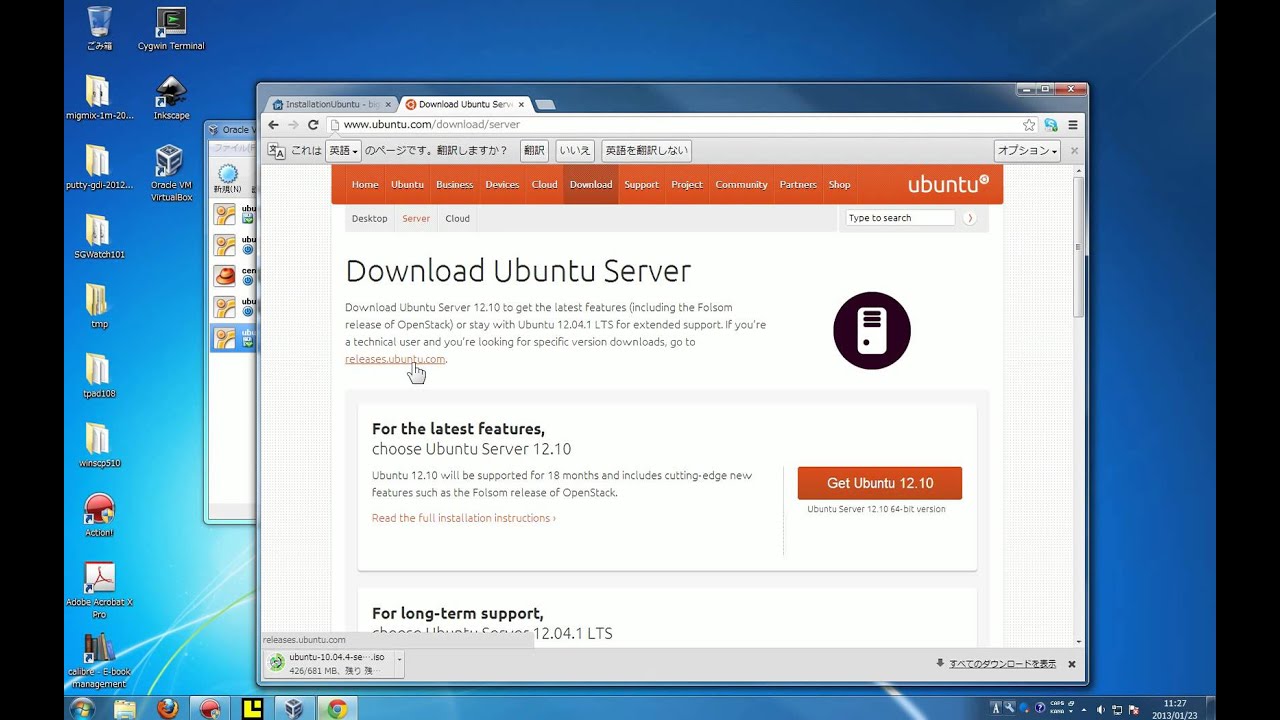
- HOW TO WIPE A COMPUTER AND INSTALL UBUNTU HOW TO
- HOW TO WIPE A COMPUTER AND INSTALL UBUNTU INSTALL
- HOW TO WIPE A COMPUTER AND INSTALL UBUNTU FULL
- HOW TO WIPE A COMPUTER AND INSTALL UBUNTU FREE
- HOW TO WIPE A COMPUTER AND INSTALL UBUNTU WINDOWS
You should then see the non-DOS partitions you want to delete. After that, or if you have only one hard disk, choose option 3 ("Delete partition or logical DOS drive"), and then choose option 4 ("Delete non-DOS partition"). If you have multiple drives, there are 5 choices use option 5 to select the hard disk that has the partition to be deleted.
HOW TO WIPE A COMPUTER AND INSTALL UBUNTU WINDOWS
Microsoft does not support Windows installed on partitions manipulated in this manner.Īnother method of removing an operating system from the hard disk and installing a different operating system is to use an MS-DOS version 5.0 or later boot disk, a Windows 95 Startup disk, or a Windows 98 Startup disk that contains the Fdisk utility. There are methods of changing partition sizes with software. The preceding method is used in this article because the Linux operating system is already functioning and there is no more room on the hard disk.
HOW TO WIPE A COMPUTER AND INSTALL UBUNTU INSTALL
Note that there are other ways to remove the Linux operating system and install Windows than the one mentioned above. dev/hdb1 218 83 Linux native (IDE hard drive 2, partition 1)Īlso, Linux recognizes more than forty different partition types, such as: dev/hda2 515 82 Linux swap (IDE hard drive 1, partition 2)

dev/hda1 * 218 83 Linux native (IDE hard drive 1, partition 1) dev/sdb1 218 83 Linux native (SCSI hard drive 2, partition 1) dev/sda2 515 82 Linux swap (SCSI hard drive 1, partition 2) dev/sda1 * 218 83 Linux native (SCSI hard drive 1, partition 1) The installation process assists you with creating the appropriate partitions on your computer.Įxamples of Linux Partition Tables Single SCSI drive Follow the installation instructions for the Windows operating system you want to install on your computer. Insert either a bootable floppy disk or a bootable CD-ROM for the Windows operating system on your computer, and then press CTRL+ALT+DELETE to restart your computer. Type q at the command prompt, and then press ENTER to quit the Fdisk tool. Some error messages may be generated as information is written to the partition table, but they should not be significant at this point because the next step is to restart the computer and then install the new operating system. Type w, and then press ENTER to write this information to the partition table. Repeat this step until all the partitions have been deleted. Type 1, and then press ENTER to delete partition number 1. You are then prompted for the partition number you want to delete. Type d at the command prompt, and then press ENTER. The first item listed is hard disk 1, partition 1 information, and the second item listed is hard disk 1, partition 2 information. Type p at the command prompt, and then press ENTER to display partition information. NOTE: For help using the Fdisk tool, type m at the command prompt, and then press ENTER. Start your computer with the Linux setup floppy disk, type fdisk at the command prompt, and then press ENTER. Remove native, swap, and boot partitions used by Linux: (There are other utilities that work just as well, such as Fdisk from MS-DOS 5.0 and later, or you can delete the partitions during the installation process.) To remove Linux from your computer and install Windows: The Fdisk tool included with Linux can be used to delete the partitions. The Linux boot manager (LILO) can be configured to start from: The Linux operating system is generally installed on partition type 83 (Linux native) or 82 (Linux swap). Linux file systems use a "superblock" at the beginning of a disk partition to identify the basic size, shape, and condition of the file system.
HOW TO WIPE A COMPUTER AND INSTALL UBUNTU FULL
Also, you must have a full release version of the Windows operating system you want to install. If you intend to restore the Linux operating system at a later date, verify that you also have a good backup of all the information stored on your computer. IMPORTANT: Before you follow the steps in this article, verify that you have a bootable disk or bootable CD-ROM for the Linux operating system, because this process completely removes the Linux operating system installed on your computer. The Windows-compatible partition can be created automatically during the installation of the Windows operating system.

To install Windows on a system that has Linux installed when you want to remove Linux, you must manually delete the partitions used by the Linux operating system. For additional information, refer to your Linux documentation. Windows and Linux can coexist on the same computer.
HOW TO WIPE A COMPUTER AND INSTALL UBUNTU FREE
This article also assumes that Linux is already installed on the hard disk using Linux native and Linux swap partitions, which are incompatible with the Windows operating system, and that there is no free space left on the drive. This article describes how you can remove the Linux operating system from your computer, and install a Windows operating system.
HOW TO WIPE A COMPUTER AND INSTALL UBUNTU HOW TO
How to Remove Linux and Install Windows on Your Computerįor a Microsoft Windows XP version of this article, see 314458.


 0 kommentar(er)
0 kommentar(er)
